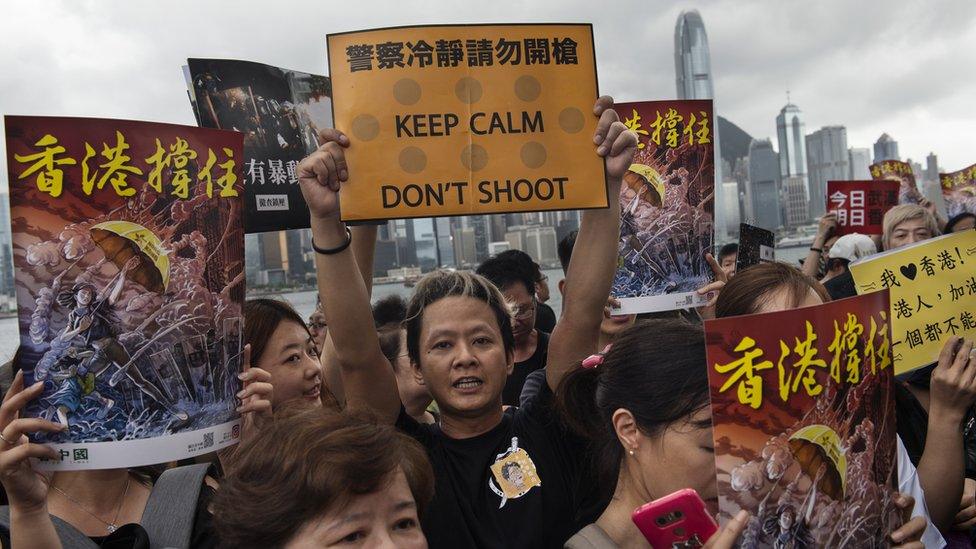Hong Kong protests: Rule of law on 'brink of collapse', police say
- Published
These Hong Kong university students fought police on Tuesday with bows and arrows
Hong Kong's rule of law has been pushed to the "brink of total collapse" after more than five months of protests, police have warned.
The warning came as protesters clashed with police across the city on Tuesday.
At the Chinese University of Hong Kong, police fired tear gas and rubber bullets at protesters who built barricades on the campus.
Earlier in the day, around 1,000 protesters rallied in central Hong Kong during the lunch hour blocking roads
Protesters, wearing office clothes, were seen chanting: "Fight for freedom, stand with Hong Kong!"
The demonstrations come just a day after the territory saw a marked escalation in violence, with police shooting one activist in the torso. A pro-Beijing supporter was set on fire by anti-government protesters.
The protests started in June against a now-withdrawn plan to allow extradition to mainland China, but have since morphed into wider demonstrations, with activists demanding greater democracy and police accountability in Hong Kong.
On Tuesday afternoon, police spokesman Kong Wing-cheung hit out at the protesters, saying they had "countless examples of rioters using random and indiscriminate violence against innocent" people.
"Hong Kong's rule of law has been pushed to the brink of total collapse as masked rioters recklessly escalate their violence under the hope that they can get away with it," he told reporters, adding that Monday's attack on the pro-Beijing supporter was being investigated as attempted murder.
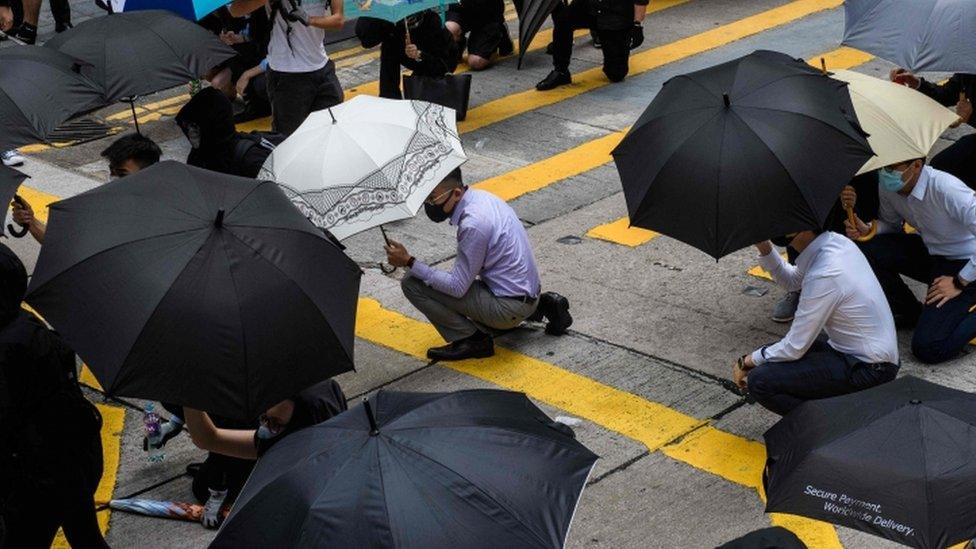
Protesters and office workers were seen blocking roads in Hong Kong's financial district
Speaking at the same conference, Supt Li Kwai-wah defended the officer's decision to shoot the protester on Monday.
"We found out that our colleague did not only face threat from one person, instead it was a group of people with an organised plan attempting to steal the gun," he said.
"In a situation like this, we believe our police are reacting according to the guideline, to protect themselves as well as the people around them."
Both the protester and the pro-Beijing supporter remain in hospital, with the latter in a critical condition.
What happened on Tuesday?
Clashes erupted at the Chinese University of Hong Kong, with police firing tear gas to disperse students, while at City University there was a standoff between students and riot police which continued into the evening.
Police continued to use tear gas to try to disperse the protesters who responded with bricks and petrol bombs. Hundreds of protesters remain at the Chinese University of Hong Kong.

Students at Hong Kong's Chinese University fought with police throughout the day
Students built roadblocks on streets in and around City University campus to stop police from entering. At one stage, a van used as part of a street barricade was set on fire.
Students at Hong Kong Polytechnic also tried to disrupt traffic near their campus.
In the morning, suspended railway services and road closures had already led to long traffic jams in the early rush hour. At noon, protesters moved into the city's central business district for a flash mob protest.
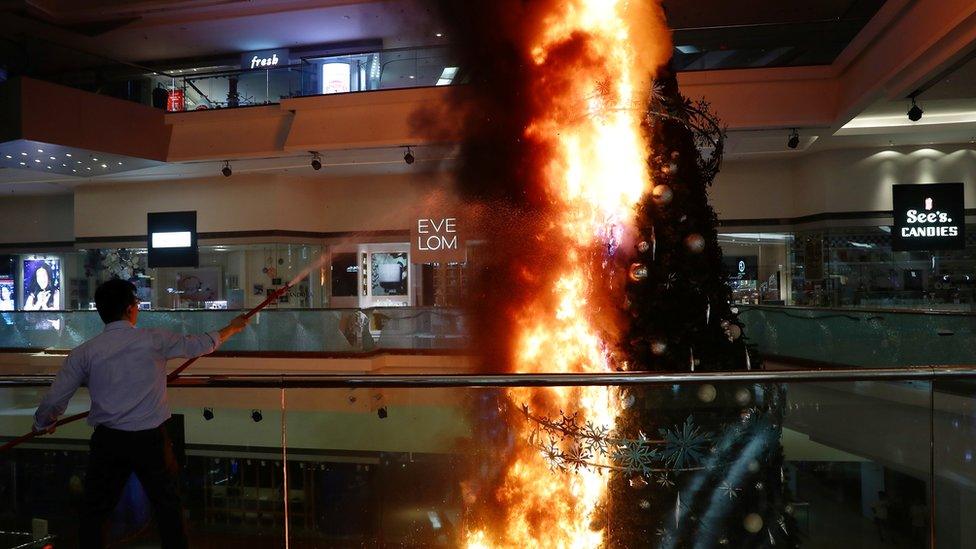
At Festival Walk shopping mall, a Christmas tree was set on fire
Protests continued to intensify throughout the day. A Christmas tree inside Festival Walk shopping mall was set on fire by protesters while others were seen smashing a glass railing with hammers.
Train stations were closed across the city.
This Hong Kong protester's shooting was livestreamed on Facebook
Eight universities have announced they will suspend classes on Wednesday.
Monday's protests saw 260 people arrested bringing the number to more than 3,000 since the protests began in June.

Students swear they will not surrender
Grace Tsoi, BBC World Service, at the Chinese University of Hong Kong
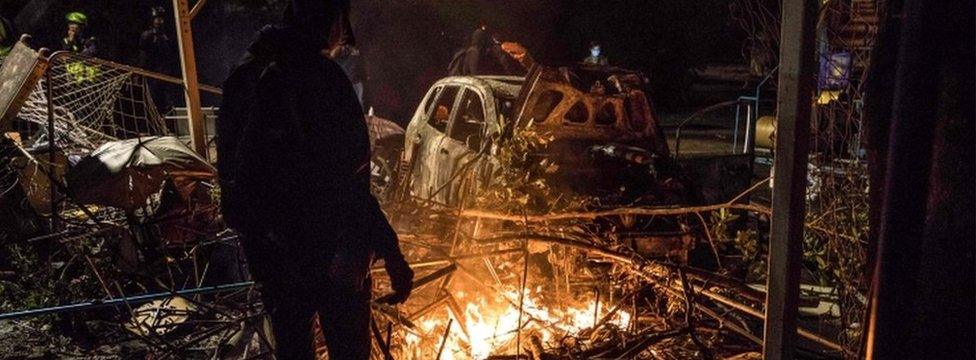
Hundreds of protesters remain at the university
The ground was strewn with bricks. The air was filled with the smell of tear gas. Fire was raging on campus. Hundreds of protesters, most of them clad in black, formed human chains to pass bricks and supplies to the front line.
Protesters set up makeshift stations to make petrol bombs using motor oil, flour and detergent non-stop.
One of the best universities in Hong Kong has turned into a battlefield after another day of intense clashes between students, who have been at the forefront of anti-government protests, and police.
The Chinese University students have been putting up resistance since the morning. On Monday, police seemed to change strategy by deploying forces to campuses. Students told me they should not be allowed there.
The university's management has tried to deescalate the situation. Vice-chancellor Rocky Tuan was also tear gassed as he was negotiating with police.
Dozens of students have been injured, including at least one hit in the eye by a projectile. The night is young and students swear they will not surrender.

Why are there protests in Hong Kong?
Hong Kong is part of China but as a former British colony it has some autonomy and people have more rights.
The protests started in June against plans to allow extradition to the mainland - which many feared would undermine the city's freedoms.
The bill was withdrawn in September but demonstrations continued and now call for full democracy and an inquiry into police behaviour.
Clashes between police and activists have become increasingly violent and in October the city banned all face masks.
- Published11 November 2019

- Published8 November 2019
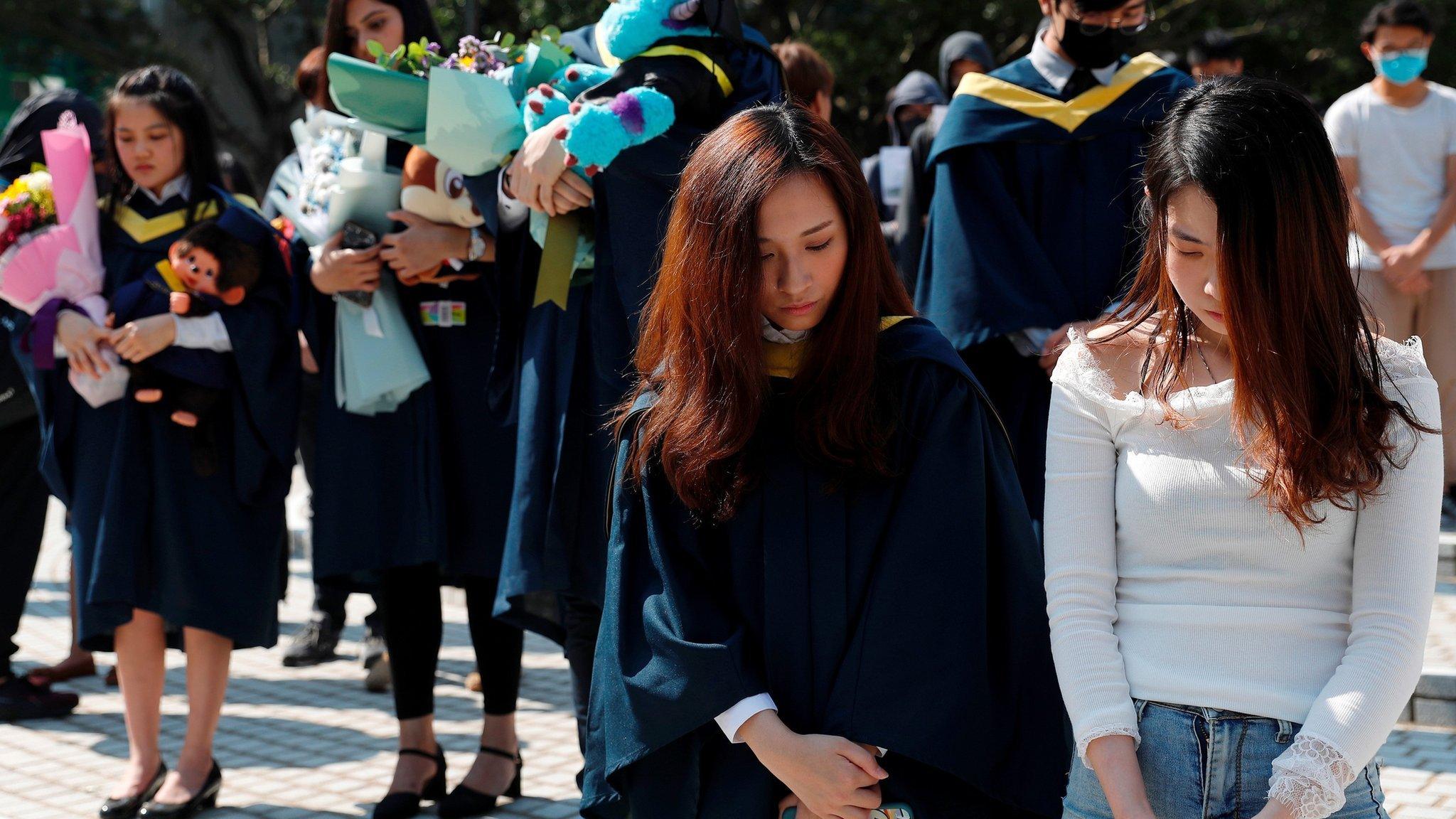
- Published6 November 2019

- Published28 November 2019
